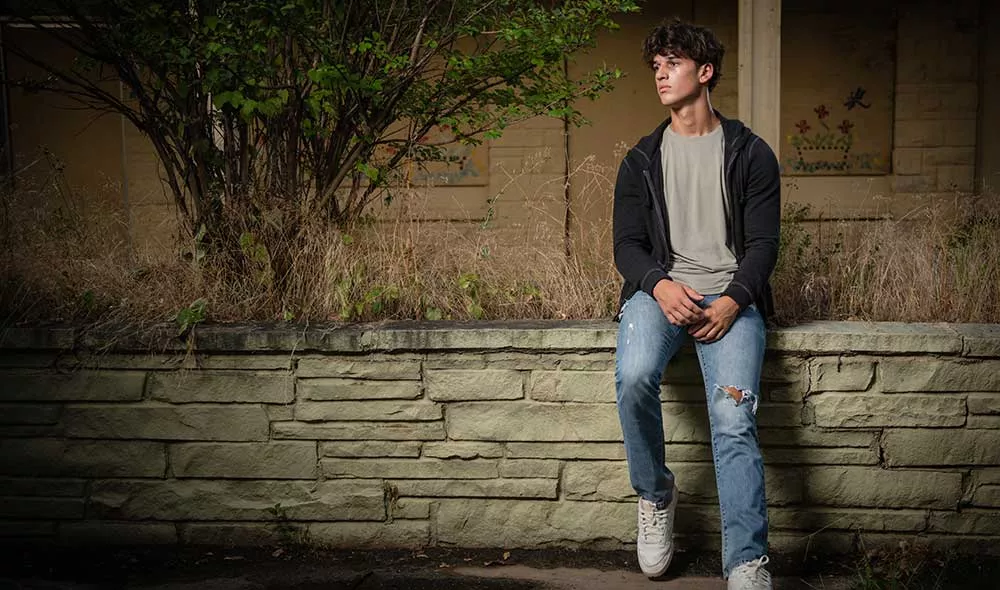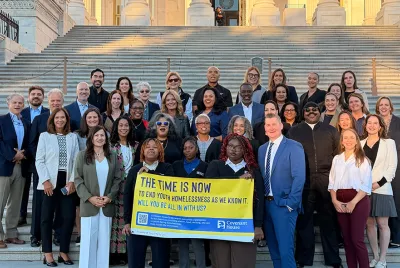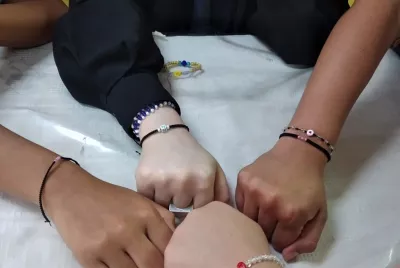Poverty Rate Soared in the U.S. in 2022

November is Youth Homelessness Awareness Month, a time when Covenant House will help turn the world’s attention towards the crisis of youth homelessness and amplify our boldest mission: To end youth homelessness.
During this powerful month of advocacy, Covenant House will join with our supporters from all sectors and walks of life, from corporate partners to individual supporters to media outlets. Youth Homelessness Awareness Month is our time and our chance to focus on solutions, like the work our staff is doing all across our federation providing housing and workforce development programs as the practical, necessary services youth need to overcome homelessness.
The numbers and the scope of the problem can be overwhelming. More than 4.2 million youth ages 13-25 experience a period of homelessness in the U.S. each year.
*A recent Wall Street Journal article by Jon Kamp and Shannon Najmabadi underscores the importance of galvanizing as a community to fight the root causes of homelessness. Some excerpts of the article appear below:
The U.S. has seen a record increase in homeless people this year as the Covid-19 pandemic fades, according to a Wall Street Journal review of data from around the country.
The data so far this year are up roughly 11% from 2022, a sharp jump that would represent by far the biggest recorded increase since the government started tracking comparable numbers in 2007. The next highest increase was a 2.7% jump in 2019, excluding an artificially high increase last year caused by pandemic counting interruptions.
This year’s surge reflects a host of pressures around the U.S. such as rising housing costs, lack of affordable rental units and the nation’s continuing opioid crisis, according to reports from nonprofits and government agencies counting the homeless.
The biggest driver remains high housing costs, which are now taking a heavier toll following the wind down of pandemic-era relief spending and policies such as eviction moratoriums, according to advocates for the homeless.
“The Covid-relief funds provided a buffer,” said Donald Whitehead Jr., executive director at the National Coalition for the Homeless, an advocacy group. “We’re seeing what happens when those resources aren’t available.”
Data from the Eviction Lab, a Princeton University research initiative that tracks filings in more than 30 cities, show most of them reported more eviction filings this year, through the end of June, than they averaged before the pandemic.
The U.S. Interagency Council on Homelessness, a federal agency, also blamed growing homeless counts on housing costs and shortages. The agency said the 2023 numbers don’t reflect recent efforts the Biden administration has undertaken to combat homelessness, such as awarding more than $500 million in new vouchers and grants to address rural and unsheltered homelessness.
“We are beginning to feel the full economic fallout of the Covid-19 era,” said Jamie Rife, executive director of the Metro Denver Homeless Initiative, the local continuum. Denver reported a 32% increase in homeless numbers in this year’s point-in-time count, among the largest increases in big cities.
The Journal reported in June, based on data at that time from places representing about 43% of the prior year’s homeless population, that numbers were trending higher around the U.S. Since then reports have come in from many more places, including Los Angeles County, which reported a nearly 10% increase.
Some places, particularly New York City, say an influx of migrants have also inflated homeless counts. The city, where court decisions have established a legal right to shelter, recently reported about 82,700 people in its shelter system.
In Massachusetts, Democratic Gov. Maura Healey declared a state of emergency this month because of a fast-rising number of migrant families in need of shelter and services. That state has a unique law requiring shelter for homeless families.
The New Orleans-area continuum saw its homeless count rise almost 15%, reversing recent improvements. A host of factors contributed to the increase, including rising rents and damage from Hurricane Ida in 2021, said Martha Kegel, who leads the local continuum.
“It’s all the more disheartening because we made huge progress in reducing homelessness during the first two years of the pandemic,” Kegel said.

At Covenant House, we know that homelessness puts youth at risk for abuse, trafficking, and physical, mental, and emotional harm. We know that homelessness interrupts a pivotal moment in a young person’s development, and the lack of support from adults, family, and peers can contribute to longer-term or chronic adult homelessness.
And we see every day that homelessness intersects with race, ethnicity, sexual identity, economics, and other factors that impact some youth more than others. Black youth and youth of color, those from low-income families, pregnant and parenting youth, and those who are LBGTQ+ face higher risks of homelessness. The time to act is now.
"I see Youth Homelessness Awareness Month as an opportunity,” said Bill Bedrossian, president and CEO of Covenant House. “An opportunity to celebrate the brave young people who put their trust in Covenant House after being abandoned, abused, or exploited by people and systems that failed them. An opportunity to stand with young people and walk with them on their individual journeys toward independence and wholeness. And an opportunity to lift the voices of young people, especially young people of color and LGBTQ+ youth, to fight for what is right, for equal opportunity, for fair, affordable housing, for equitable job opportunities and pay.
“We can't end youth homelessness by declaring a month about it, but we can end youth homelessness by following our moral obligation to provide the same rights to all of our young people,” he said. “Youth Homelessness Awareness Month is where we start."
*Disclaimer: “The views, thoughts, and opinions expressed in the text of the article above belong solely to the author of the article, and do not necessarily reflect the views of Covenant House International. These articles are shared with the purpose of being informative and thought provoking.”
You might also like...
All news & insightsShelter Is Only the Beginning
From crisis to care: Find out what it's like when a young person enters our doors.


